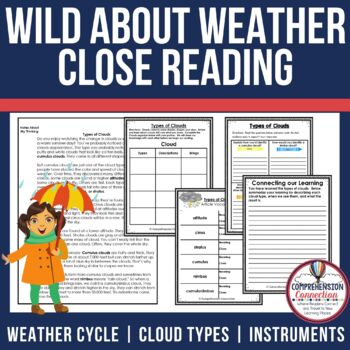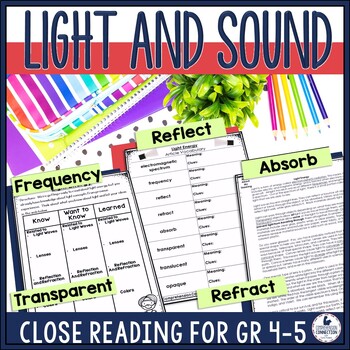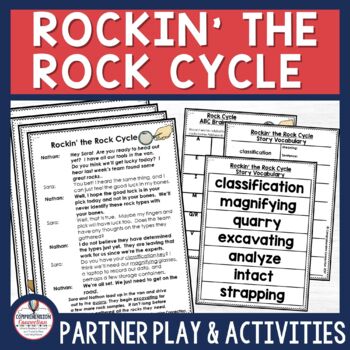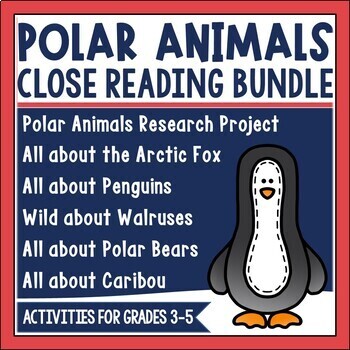How do you teach students to be analytic when they read? How do we even get kids to pause and think deeply during reading. I believe the answer is Close Reading. Teaching kids the close reading process help plant seeds, and over time, students will use the strategy on their own. In this post, I'm going to share how I've used close reading to help prepare my students for tackling the SOL reading test.
Why You Should Use Close Reads:
Truly, this was the answer for my kids this past year, and I was so pleased with the final results for them. It was so wonderful seeing some pass for the very first time. So what did we do? Well, for starters, I did a LOT of think aloud to model how to analyze the importance of information AS we read. Thinking aloud is very important and should be used with read alouds, articles, and even with anchor charts we use. You must do this if you want to scaffold the instruction for your struggling readers (or when you first share it with your students for the first time). Gradually, you want them to take over the responsibility and independently do it if you want them to have success with the texts on the test. (but really with anything they read, right??) IMO, it's time we stop dwelling on the tests and start worrying about our kids as readers and thinkers.
Falling in Love with Close Reading by Chris Lehman
If you are looking for a great teacher resource book about close reading, Chris Lehman's book, Falling in Love with Close Reading offers a thorough explanation of how and why it works. I heard Chris speak two years ago. During his presentation, he used song lyrics for the text for modeling with us, and that is an important point. Any text can be used for this strategy, and in fact, using a variety of texts is necessary for our kids. Here are a few tips I learned from his book...
According to Chris, Close Reading is "making careful observations" of something and then "developing interpretations from those observations". In other words, we stop to look carefully at choices an author (or painter or musician or director or architect) has made, and then develop ideas from what we have noticed." This means students read with different lenses to match the purpose we give them and observe text evidence to fit that designated purpose. Readers use the Close Reading strategy to meet the expectations we set, and then, expand upon those observations by connecting to other texts, synthesizing the information for deeper meaning, and analyzing the author's style and word choice for example by citing the text evidence. Children need to see how the information they read connects to build the full meaning.
We want our readers to be strategic in their reading and thinking. We want them to observe the author's use of language to convey meaning and apply that learning in their own work. I tell my students all the time that reading and writing go hand-in-hand. When I share a read aloud with them to introduce a new writing assignment, I'm not simply reading the book. We are ANALYZING the author's craft to apply it to our own writing ideas. The best way to become a strong writer is to read strong writing that is filled with vivid vocabulary, includes varied sentence length and type, that's well organized, and that shares a strong message or idea. As we break down the text, we are thinking, and test taking is all about thinking strategies.
As students work with the Close Reading strategy, their level of understanding improves. With the first reading, I see my students navigate through the decoding process with some of the vocabulary, get the gist of the reading, and observe basic information with a pencil in hand to mark it. They scratch the surface. With the second and third visits to the text, we hone in on specific skills, record annotations in the margins of the evidence that proves our thinking and that match the assigned purpose, and share our learning and opinions with one another. It is through group discussions that we quickly see the depths of understanding our students have achieved.


Close Reading is a strategy that can be used with all sorts of text types, so don't confine it's practicality to just short fiction and nonfiction stories. It works well with video clips, song lyrics, poetry, television ads, and movies. Students in upper elementary through high school have a need to talk and crave controversy. Chris gives examples of how we as teachers can capitalize on that energy in studying point of view, argument, and text structure across multiple texts. Although Chris recommends Close Reading for grades 5-8, I believe this gives evidence of how the strategy can be used with younger students as well. We can use Close Reading with poetry as we think about the author's choice of words and use of rhythm and rhyme, with class read alouds or youtube showings of a story, and with songs...even in kindergarten. You see, kinders love to talk too, and they can be very observant. If you decide to wear one red sock and one blue, I would place a strong bet that you wouldn't make it through the day without your kinders telling you. Why not tap into those observation skills with our texts too.

With all of this in mind, there is a routine that is used with Close Reading. Chris talks at length about what Close Reading is and is not, so be sure to use the term accurately. It is not answering the ol' textbook questions, listening to a read aloud, doing book reports, jotting post its (unless it's for a specific piece of evidence from the text), or filling out a worksheet. It is a strategic method of looking at and using text. It is about the interactions between reader and text, the ideas drawn from the reading, and the conclusions made. Here are the general steps I use when doing a Close Read with my students.
First Reading-Lenses
Second Reading-Patterns
Third Reading-Ideas
do not hesitate to ask questions. I am glad to help anyone. One thing you might consider too is using this during your science and social studies blocks. I did a lot of cross curricular work with my kids in order to help them review the science and social studies content AND practice reading skills. I put together a few Close Reading sets for Light and Sound and Weather, and I also included this technique with the partner scripts I've written. I will share a few of those products below as well as a freebie you might like to use now for practice.. I will be expanding this idea in the coming months, so if you're interested in these, you can follow my store on Teachers Pay Teachers [here]I hope this sounds like a process you can use. If you have any questions as you dig in, please
 Here is a freebie I shared recently on my own blog (not necessarily as a Close Reading set). It is an informational article about the history of scarecrows. You can see I've added space for annotating and as my students worked with this article, we used check marks, question marks, boxing, underlining, and such to mark as we read. You can make multiple copies of the article for repeated reading. This freebie does not include all of the components mentioned, but you can certainly modify how you use it.
Here is a freebie I shared recently on my own blog (not necessarily as a Close Reading set). It is an informational article about the history of scarecrows. You can see I've added space for annotating and as my students worked with this article, we used check marks, question marks, boxing, underlining, and such to mark as we read. You can make multiple copies of the article for repeated reading. This freebie does not include all of the components mentioned, but you can certainly modify how you use it. Thanks for visiting today. If you'd like to pin this article for later, here is an image for you to use.















Carla, I LOVE the break down of close reading! This is great :) Will share with my teachers. Thanks!
ReplyDeleteJulie
The Techie Teacher
Thanks Julie! I appreciate that. It may be old info for some, and some teachers may modify the process. I have a poster with the symbols I have my kids use posted in the classroom, and for times they need to work away from it, I have a bookmark with the same symbols listed. I forgot to insert that in my post.
Delete